The City of Norwich Aviation Museum is a fantastic destination for a unique and engaging day out in Norfolk. It’s the perfect place to dive into the area’s aviation heritage, as it’s Norfolk’s largest aviation museum. The outdoor space houses nearly 30 aircraft, while the indoor exhibit hosts many cockpit sections, engines and military uniforms. You can even take a guided tour in one of the biggest aircraft with a volunteer. I visited the City of Norwich Aviation Museum with my son, and we had a lot of fun discovering Norfolk’s aviation heritage.
Table of Contents
What to See at the City of Norwich Aviation Museum
The City of Norwich Aviation Museum area has an important historical significance itself. The museum, in fact, stands on the site of what was once a US Army Air Force base. Later it became a Royal Air Force Station at Horsham St. Faith. Despite not being very famous outside the UK until the Masters of the Air series was released, this area played a crucial role in aviation during World War II. The base hosted the 100th Bombardment Group, known for its hazardous bombing missions over Nazi Germany.
PLAN YOUR TRIP TO ENGLAND
Stay connected in England with a giffgaff free SIM or an Airalo eSim for seamless data coverage throughout the UK. Additionally, rent a car in the United Kingdom to explore all the attractions of the British countryside, including the fantastic museums on my blog!
In 1968, the former RAF base became the Norwich International Airport, adding another layer to the region’s aviation heritage. Today, the City of Norwich Aviation Museum stands proudly as Norfolk’s largest aviation museum, with a diverse collection of aircraft and exhibits.
The museum has nearly 30 aircraft on display, ranging from single-engine prop planes to military bombers. Outdoors, you can walk among these historic planes, marvelling at their size and power. The museum also displays smaller exhibits from personal accounts of those involved with aviation around Norfolk. You can see many stuff from the 74 Squadron, the 8th Air Force, and the 100 Bombardment Group operations throughout World War II.
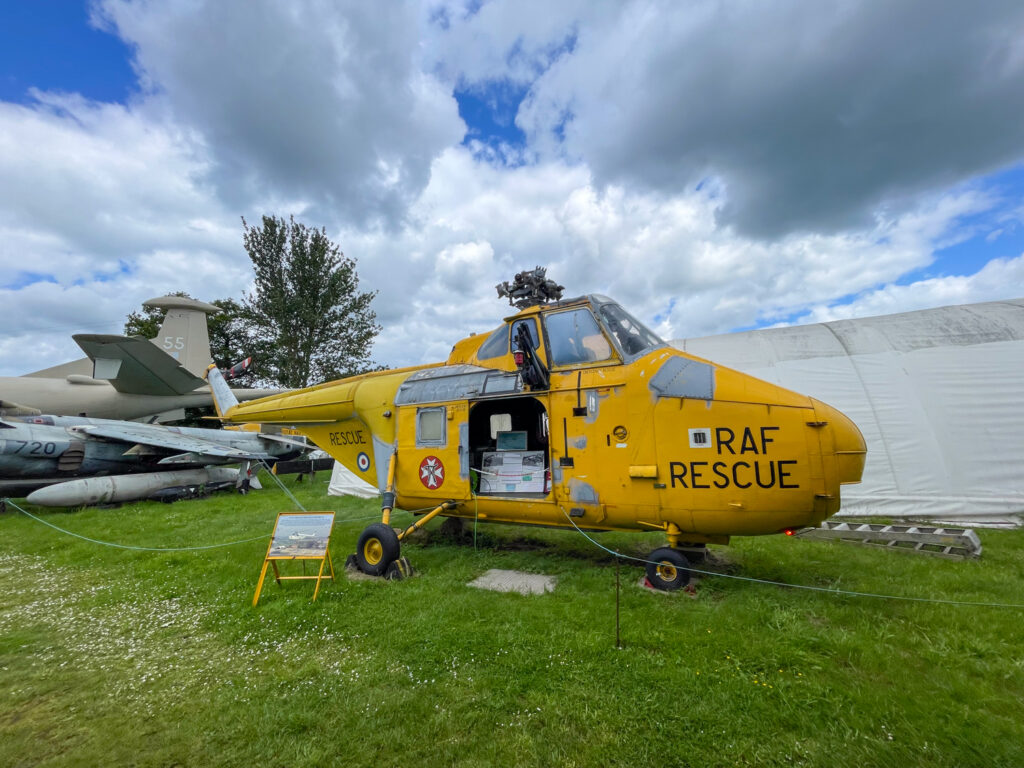
Guided Aircraft Tours
One of the highlights of the City of Norwich Aviation Museum is the opportunity to get inside an aircraft with a guided tour. Accompanied by a museum volunteer, you can explore iconic planes such as Avro Vulcan Bomber, Hawker Siddeley Nimrod, Avro RJ85, Fokker Friendship F27, and Handley Page Herald.
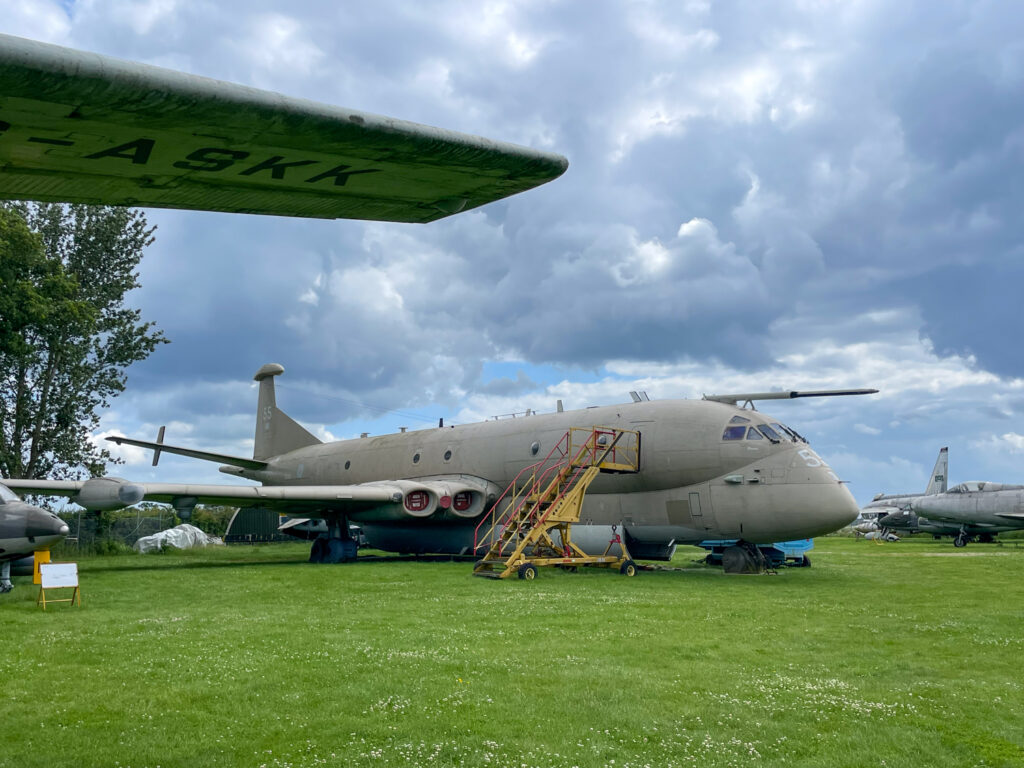
We had the opportunity to board the Hawker Siddeley Nimrod, the biggest aircraft on display. There, we learned that military aircraft flying at low altitudes are typically bombers or surveillance planes. We also discovered that you’re not allowed to press any buttons because sometimes volunteers activate the aircraft’s electrical systems. I’m not sure if this is for maintenance or events, but I like to imagine that some of these old planes could still fly!
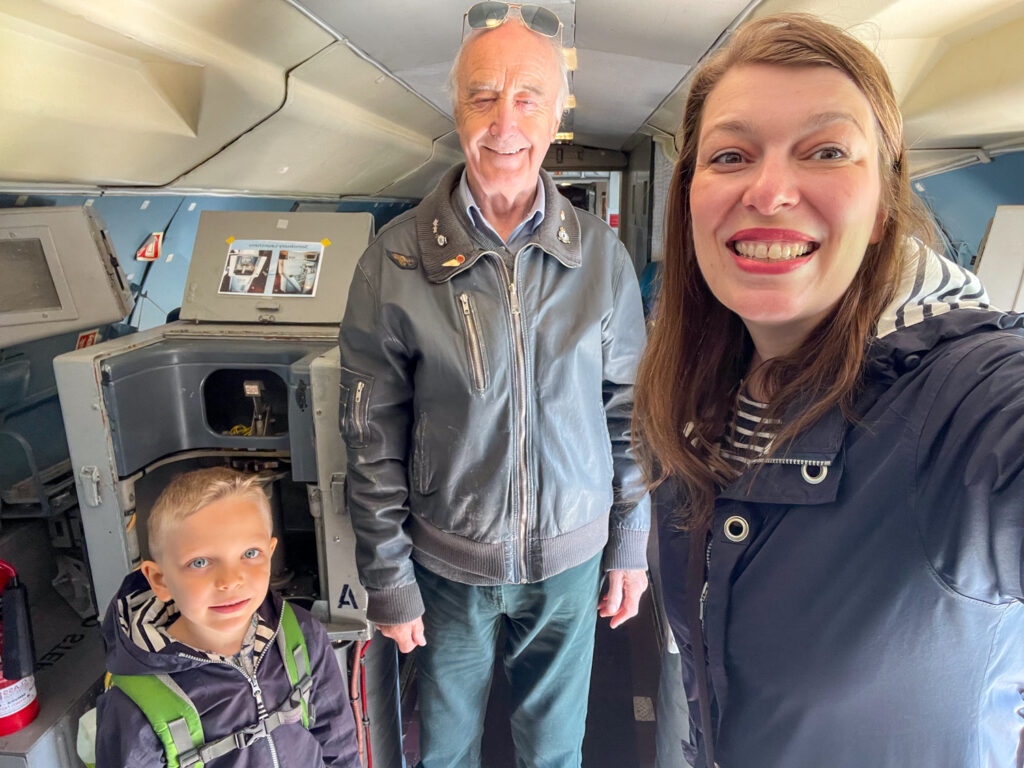
The Regional Airline AirUK
During our visit to the City of Norwich Aviation Museum, we uncovered the story of AirUK. This airline could be perhaps well-known to Brits, but might be unfamiliar to others.
AirUK was an independent regional airline in the United Kingdom, founded in 1980 following the merger of four rival UK-based regional carriers. The airline’s primary maintenance base was at Norwich Airport, which had previously been the engineering hub for Air Anglia.
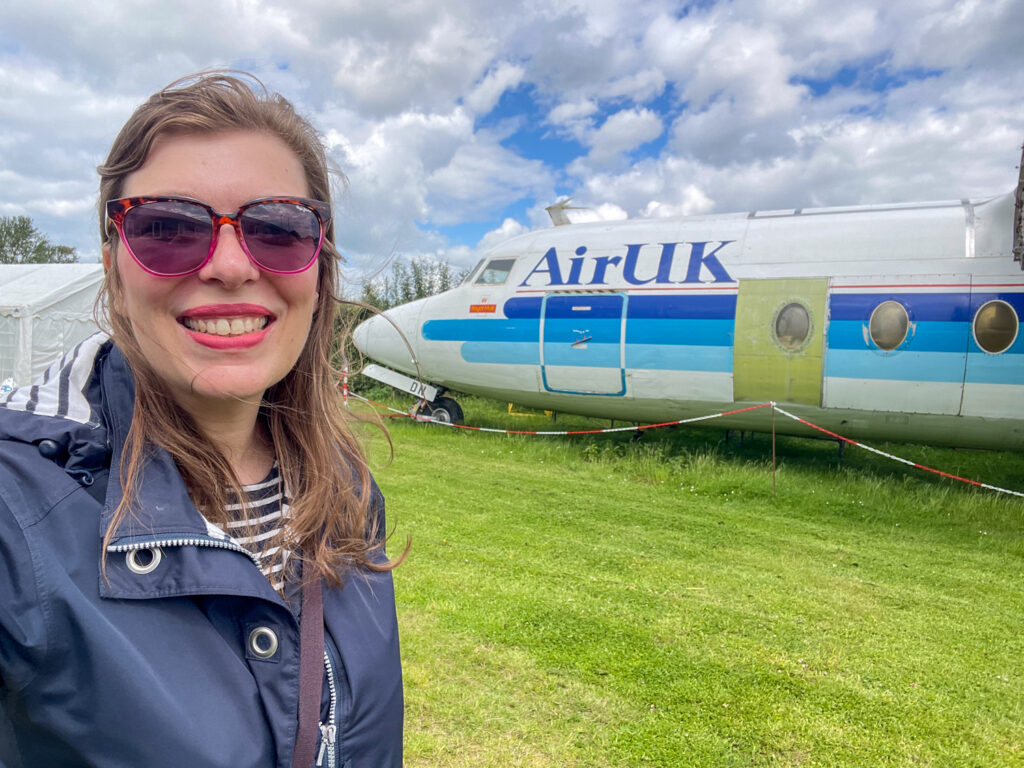
In 1997, KLM became Air UK’s sole shareholder, and just a year later, the airline was rebranded as KLM UK. This change in ownership eventually led KLM to fly from Norwich Airport, linking the regional hub to the broader global network.
By the way, I flew just once from Norwich to Turin with KLM, with a stopover in Amsterdam where my luggage went alone to Paris, so I’m not sure it was really an improvement.
However, today, you can find a collection of AirUK aircraft with various liveries at the City of Norwich Aviation Museum. It is the only place where I have seen this airliner. If you know of other locations where I can spot more AirUK planes, please write it in a comment.
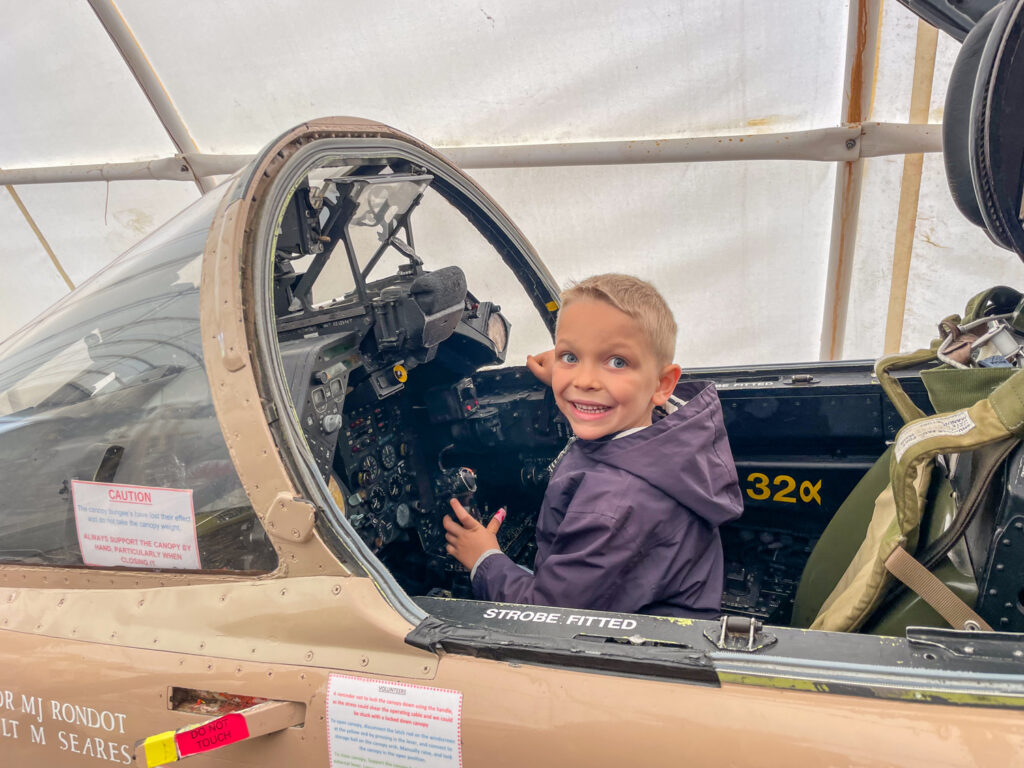
WAAF: Women’s Auxiliary Air Force
As you know, the role of women in aviation is still very limited, even though it has been increasing in recent years. For this reason, I loved discovering a (small) section of the City of Norwich Aviation Museum focused on the role of women in British aviation, specifically through the Women’s Auxiliary Air Force (WAAF).
Established in 1939 during WWII, the WAAF was the female auxiliary of the Royal Air Force (RAF). Women in the WAAF did not serve as aircrew members, as only the civilian Air Transport Auxiliary service employed women pilots. However, WAAFs played crucial support roles in the war effort.
The WAAF was involved in many essential tasks, such as catering, meteorology, radar operation, aircraft maintenance, transport, and telecommunications. They staffed operations rooms vital in directing fighter aircraft against the German Luftwaffe and mapping enemy and British aircraft positions.
Despite these operations were essential to the success of RAF missions during the war, WAAFs were paid only two-thirds of the salary of their male counterparts in the RAF!
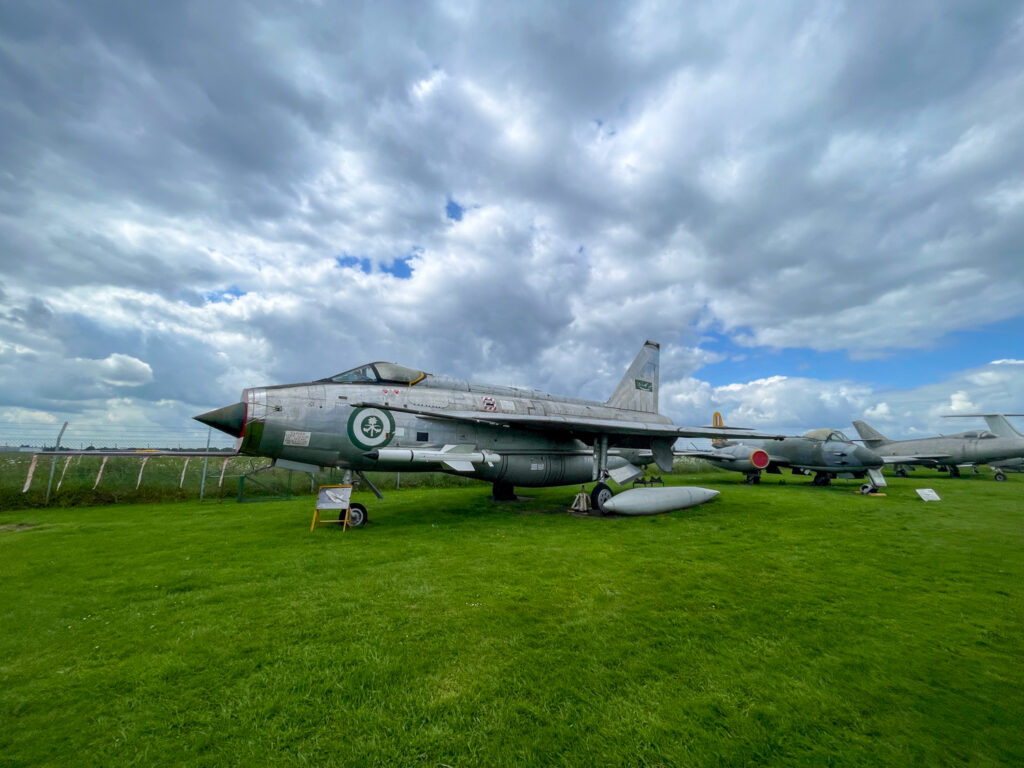
Indoor Exhibit: A Glimpse into the History of British Aviation During WWII
Inside the City of Norwich Aviation Museum, we learned about the role of British aviation during WWII. One fascinating part of the exhibit focused on the challenges of flying older aircraft.
You’ll be surprised to know that many of the navigation techniques used during WWII are still relevant today for obtaining a private pilot’s license. Back then, pilots had no modern navigation aids that we rely on today. Instead, they had to rely solely on manual navigation, which meant no GPS or radar to guide them.
I can assure you that navigation is a pretty complicated topic. Despite how large or heavy an aircraft is, it will always be subject to the air around it. Changes in wind speed and direction can easily throw a plane off course.
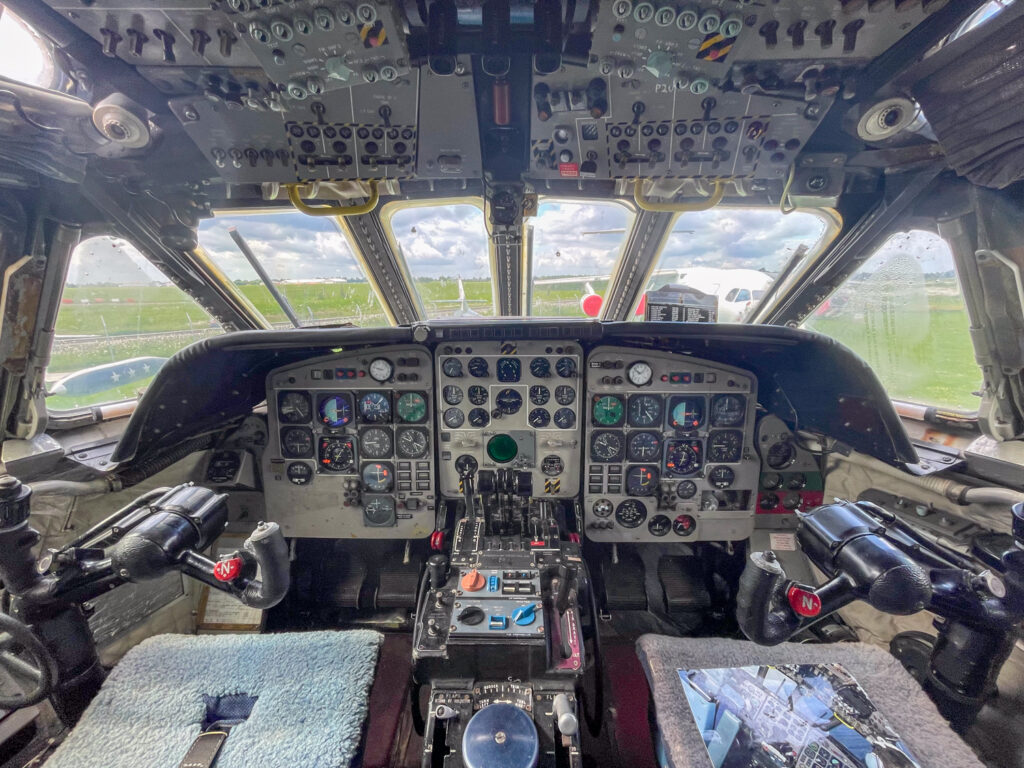
This makes it critical for pilots and navigators to constantly update their course during flight with manual calculations. Especially in old aircraft, this could be incredibly challenging. Temperature drops, fatigue, and fear can really impact the navigator’s ability. As a pilot student myself, I’m truly impressed by the remarkable skills these WWII pilots and navigators had!
We also learned about assembly ships. They are brightly painted aircraft whose primary mission was to serve as reference points for other planes to regroup and fly in formation. Additionally, the exhibit showcases various aircraft components such as undercarriages, engines, wheels, and other essential parts.
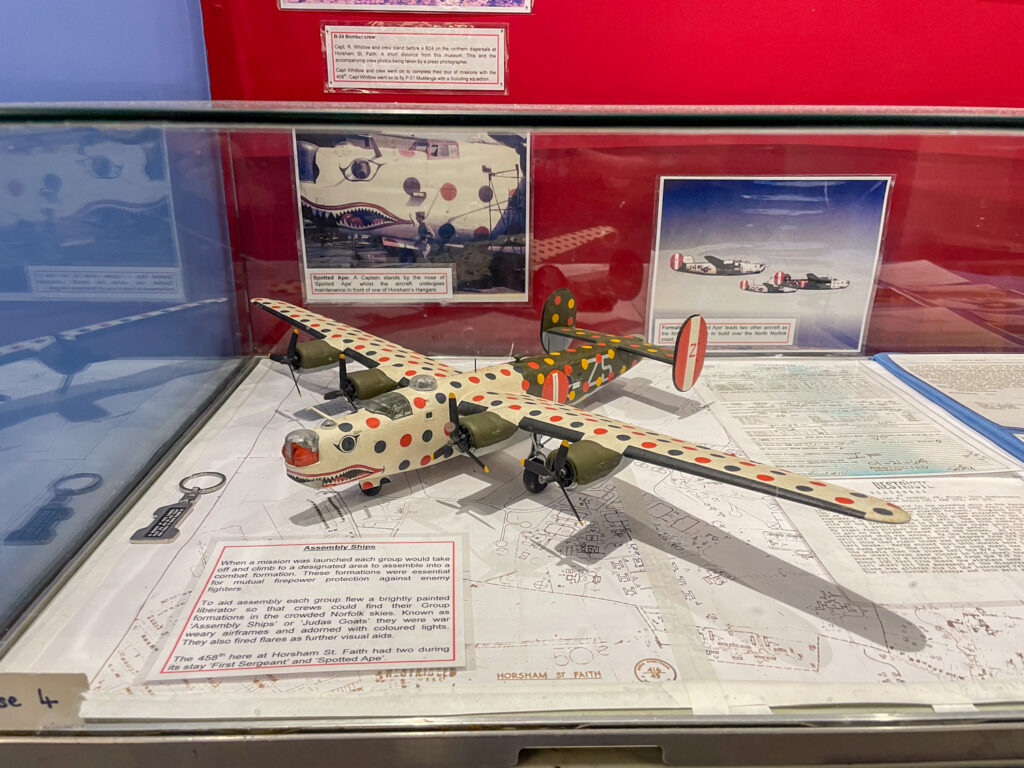
Plan Your Visit to the City of Norwich Aviation Museum
To plan your visit to the City of Norwich Aviation Museum, follow this useful insight. Consider spending about two hours exploring the indoor and outdoor exhibits, including a guided tour for a more in-depth experience.
The museum hosts a nice tea room where you can enjoy an excellent Lavazza coffee. As someone born and raised in Italy, I can honestly say it’s the best coffee in Norwich! If you’re feeling hungry, you can also grab some sandwiches and packaged snacks.
The best part of the museum is outdoors, on the lawn, where the large aircraft are displayed. For this reason, given the variability of the British weather, I recommend that you dress in layers, with a waterproof jacket and shoes to appreciate the planes even in drizzle.

Opening Hours
The City of Norwich Aviation Museum is open only Wednesday, Friday, Saturday and Sunday, from 10:00 am to 4:00 pm. Opening hours may vary during holidays, so if in doubt, I advise you to phone the museum.
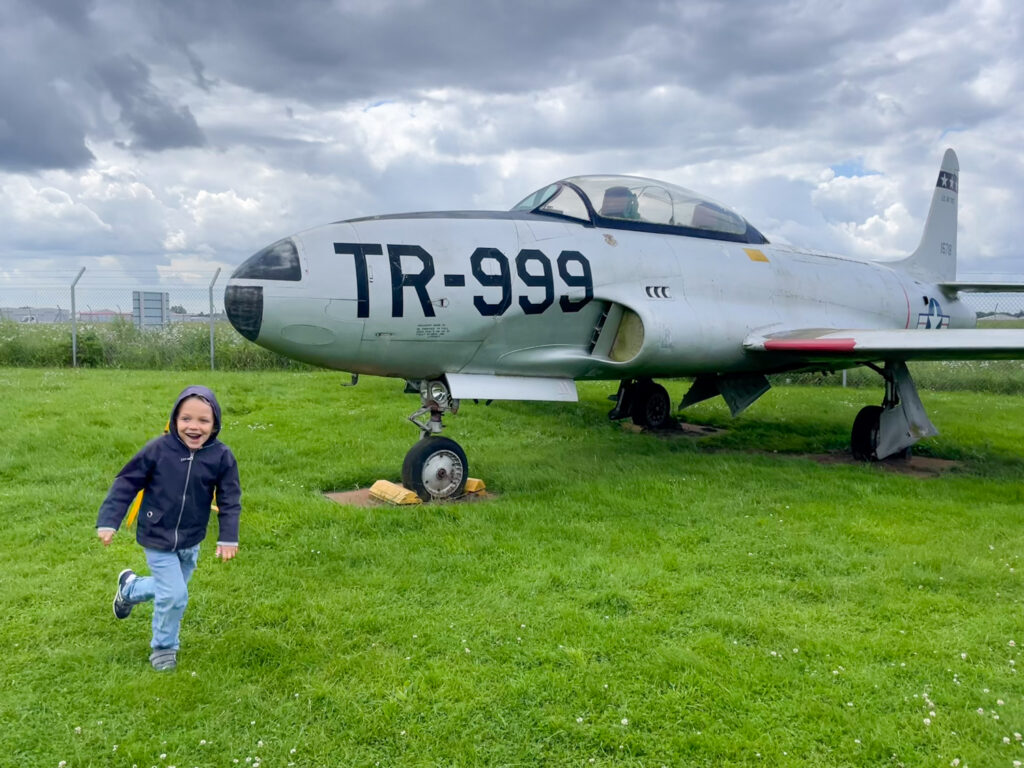
Admission Fee
You can buy your tickets for the City of Norwich Aviation Museum on-site. There is no need to purchase tickets in advance. The ticket prices are £9.00 for adults and £5.00 for children aged 8 to 16, while children under 8 can enter for free. Aeroplane tours are subject to availability of volunteers and may have an extra cost.
If you live nearby or plan to return within a year, it could be convenient to consider the annual admission pass. The museum hosts regular events throughout the year and is a great place to spend a day with your family.
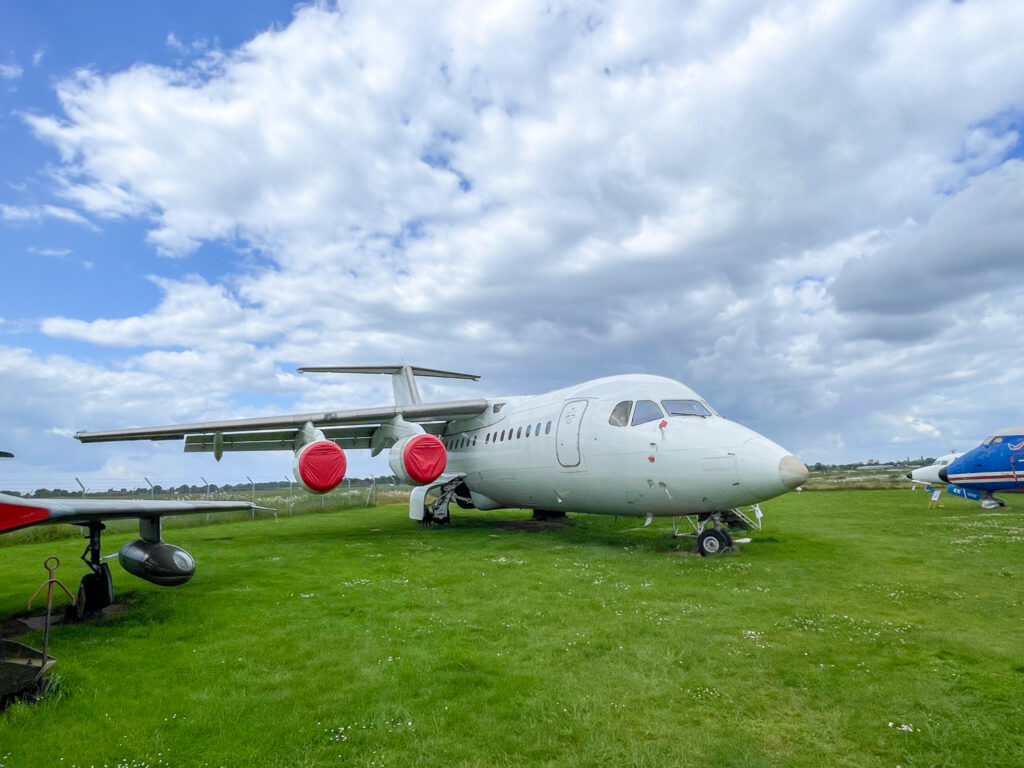
How to reach the City of Norwich Aviation Museum
The City of Norwich Aviation Museum is situated near Norwich International Airport, sharing the same site that was once an RAF base. However, it is located on the opposite side of the airport from where flights depart, making it somewhat challenging to access despite its proximity.
Although we visited using public transport, I won’t recommend coming by bus. Driving there is much more convenient! To reach the museum by car, you simply enter the postcode on Google Maps or your sat nav, then follow the brown “Aviation Museum” tourist signs.
If you take the bus, be prepared for a 15 to 20-minute walk from the bus stop, as only two bus services travel from Norwich city centre to the museum: Sanders Coaches services 43 and 44. These buses run from Castle Meadow in the city centre approximately every hour, seven days a week.
Interestingly, if you arrive by plane, there is no public transport connecting the airport to the museum, although the only thing separating them is the runway! Your options are limited to either a 2.5 to 3-mile walk, taking a taxi, or using a private hire vehicle.
City of Norwich Aviation Museum
Old Norwich Road, Horsham St. Faith, Norwich NR10 3JF
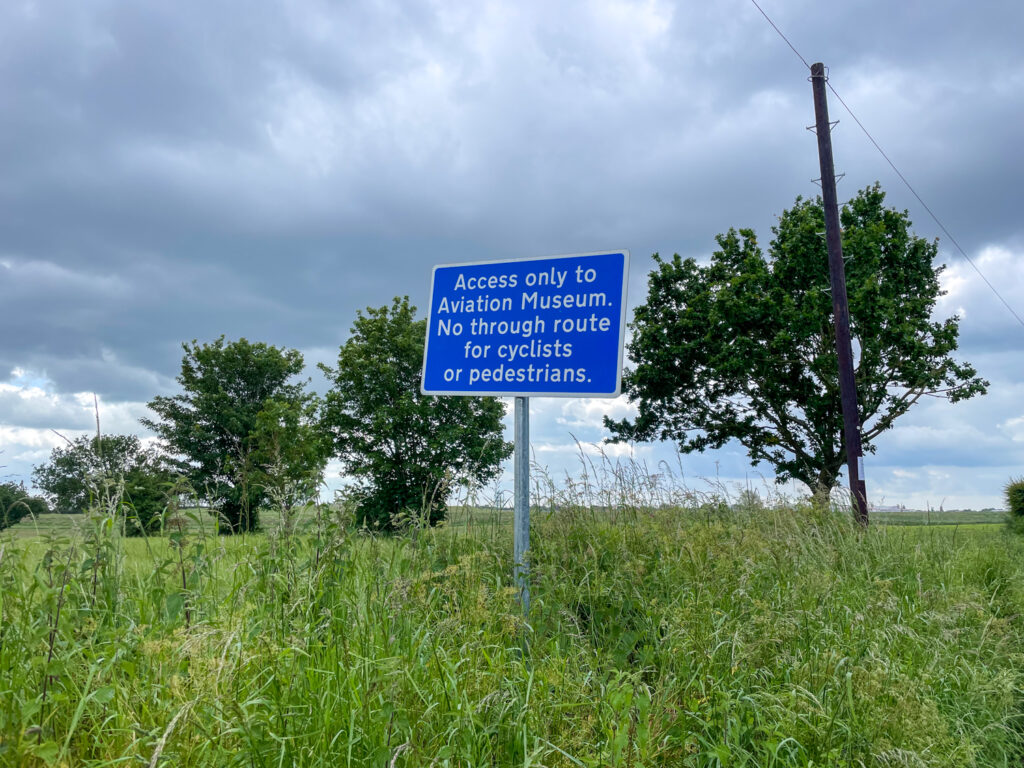
Where to Stay in Norwich
Norwich is one of my favourite cities in Europe. I lived there for a time and return frequently, whether on my own or with my son, to visit museums and catch up with friends. Therefore, I can recommend fantastic hotels that I have personally experienced.
For a truly British experience you can stay at The Maids Head Hotel, an elegant hotel with restaurant and free parking opposite the Cathedral, just a stone’s throw from Elm Hill, two of Norwich’s most popular attractions. If you arrive by train and prefer a flat, the Wellington Apartments have studios with a kitchen, reception open 24/7, garden and free WiFi in the centre of Norwich, close to the train station.
Final Thoughts on the City of Norwich Aviation Museum
In conclusion, the City of Norwich Aviation Museum offers a fascinating insight into Norfolk’s aviation history through its remarkable collection of aircraft and memorabilia. I hope this article inspires you to visit the City of Norwich Aviation Museum.
For me and my son, both aviation enthusiasts, it is absolutely a must-see destination. We really enjoyed discovering new planes and learning something new about British aviation history. If you are travelling by car and you want to see more aircraft, I also recommend to visit the Norfolk and Suffolk Aviation Museum in Bungay, around 30 miles away.
Feel free to leave a comment on what you found most interesting about the City of Norwich Aviation Museum.
